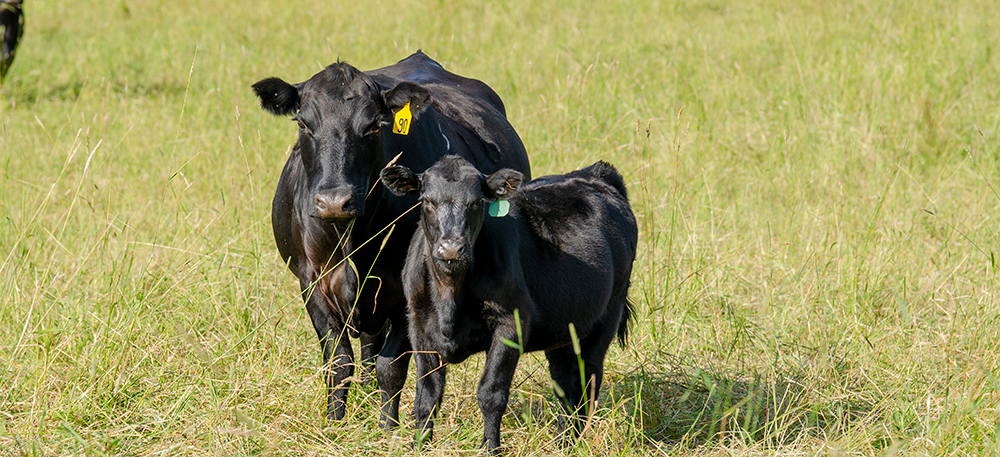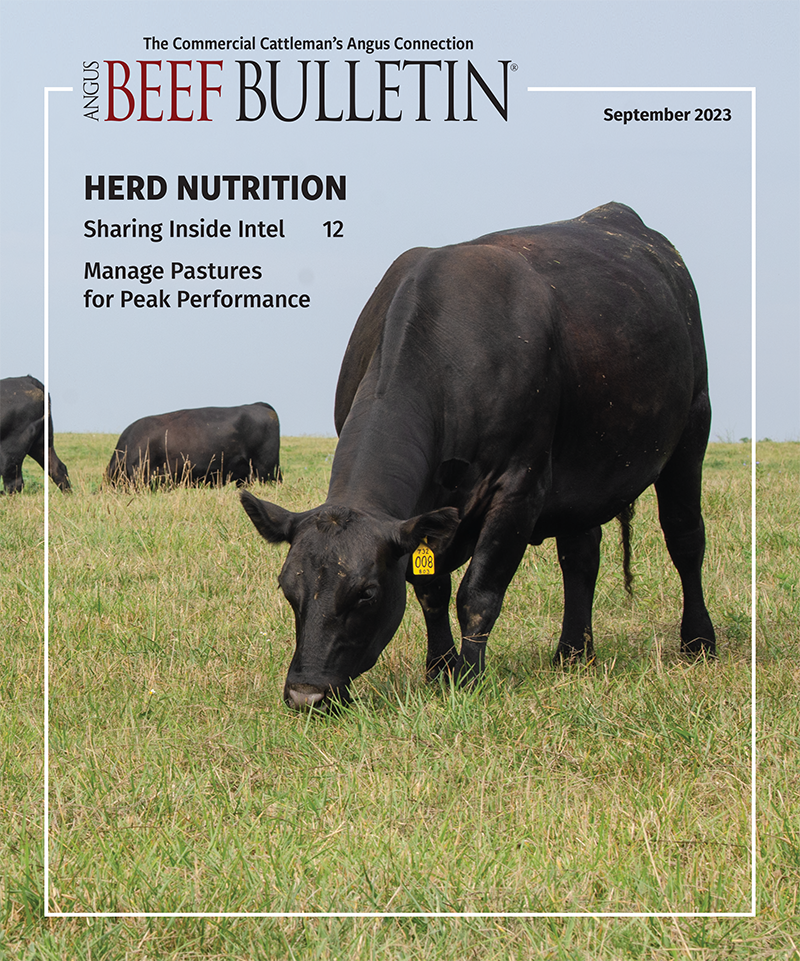
Fall weaning is the time when some producers make keep/sell decisions for the herd. [Photo by Shauna Hermel.]
Deciding to Keep or Sell Heifers
K-State cattle experts offer tips on how to make this choice.
When making a big life decision, many people turn to making a list of pros and cons to help them logically work through the process. In agriculture, that often leads to creating a spreadsheet to calculate costs, depreciation and potential for a return on the investment, say cattle experts at Kansas State University (K-State).
One of the decisions that many cow-calf producers face at fall weaning is determining which heifers to keep and which ones to sell. This was the topic of a recent Cattle Chat podcast, produced through the Beef Cattle Institute at K-State.
“Every operation is going to be a little different, but when deciding whether to keep or sell replacement heifers, producers need to assess if they have the labor and resources available to raise them,” said Dustin Pendell, K-State ag economist.
Along with that, K-State veterinarian Brian Lubbers said the current market price is also a factor worth considering.
“Calf prices are high right now, and so that makes the opportunity cost really high,” Lubbers said. “If you are thinking about contracting the herd a little bit, now might be a good time to sell a few extra calves.”
For those who prefer to raise their replacement heifers, K-State Veterinarian Bob Larson said he prioritizes keeping heifers that give him the best odds of success.
“The best-bet heifers that have the highest likelihood of being a long-term cow are ones that were born early in the calving season to a dam that has a good disposition and high genetic quality and are daughters of a quality sire,” Larson said. “I need her to be born early, because she will be the most likely to get pregnant early and stay in the herd a long time.”
Even if the heifer meets the genetic and temperament criteria, Larson said if she was born late in the calving season, she falls to his sell list.
When thinking about resources, the experts agree that it is important to think about the amount of weight the heifers need to gain between weaning and breeding.
“Depending on the mature size of the cow herd, most heifers will need to gain 300 pounds between weaning and breeding,” said K-State beef cattle nutritionist Phillip Lancaster.
He recommends producers calculate the expected daily gain and compare that to what feed resources are available.
“In some parts of the country, there aren’t ample feed supplies to carry cattle through the winter. In that case, producers may need to sell the heifers and look to buy bred heifers and cows in the spring and summer after this time of limited feed resources has passed,” Lancaster said.
K-State veterinarian Brad White encouraged producers to start thinking now about their management plan for the fall.
“You need to pencil it out, because keeping this year’s heifers is going to make them be more expensive cows as compared to other years,” White said. “Producers need to dive into the spreadsheets now to calculate the right number of heifers to keep before running the cattle through the chutes at weaning.”
To hear the full discussion, listen to the Cattle Chat podcast online or through your preferred streaming platform.
Editor’s note: Lisa Moser is a communications strategist for K-State Research and Extension news service.



